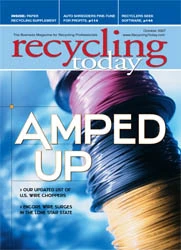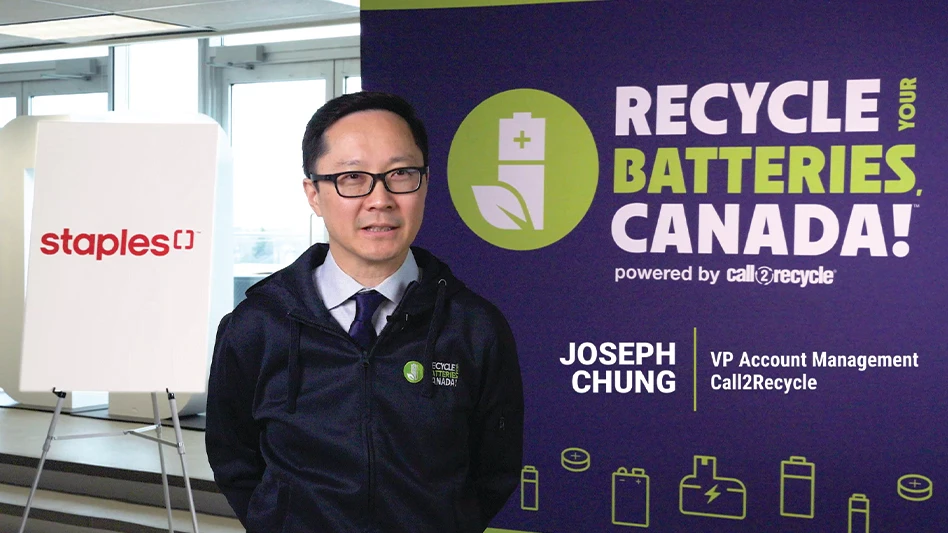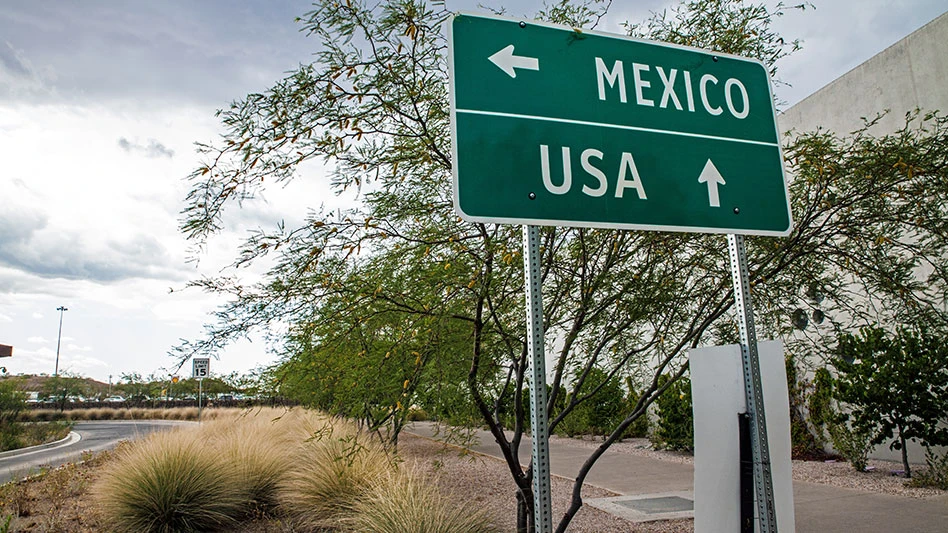What I’ll try to do today is to share some pieces of information about what’s happening in the export markets around the world and to try to touch on some things that maybe you might not hear all the time. If you’re a mill buyer and you have someone coming to you asking why things are happening or you’re a recycler or trading company and you’re trying to figure out this sort of strange business we’ve been in, perhaps this will help.
DEALING LONG DISTANCEI did domestic sales for a long time and I thought it was kind of tricky at the time but now, doing export, it’s pretty straightforward. You ship some paper to the mill and most of the time everything is fine. If you have a problem, they call you up. If you don’t agree with how to resolve it, you get in your car, you get on a plane, and you go over and look at it and you work something out with the mill. Either you resolve the problem or you move it to a packer or other mill nearby, which is pretty straightforward.
With export sales, it’s pretty far away. It’s expensive to get to India or China with about a week’s notice when you book a flight, and it’s difficult to inspect the material yourself, and often you have to depend on representatives or other people to do that for you. You have transportation costs and when there is a problem, suddenly tariffs and import duties, and things that you never seem to hear about magically get added on to the cost of the problem. And then, on top of it, you don’t really have a lot of friends there who can take your distressed tons and know when you’re in trouble and the price is falling like a brick.
So, how do we do it? How do we export with confidence? Well, first thing is, I’d suggest you do business with people you know and trust. If you want to develop business with new people, it’s really important that you get references from people you trust and only if they have firsthand experience doing business with that company, not just someone they know in passing.
Next, know what you’re shipping and make sure it complies with the requirements of the person buying it. It sounds simple, but you’d be surprised how many times, if you just double check, you’re not quite on the same page with the person you’re selling to. Next, ask yourself if there is anything unique or different about your material and, if there is, share that information before you ship and make sure it’s agreeable to the buyer. It could be something as simple as saying, "Hey, this stuff’s been stored outside, it’s got some moisture. The bales weigh 10 percent more than my bales normally weigh. Can we deduct that weight right off the top and not have a moisture problem?" Just something as simple as that can avoid a major headache later.
Next thing is, make sure the buyer actually understands what he’s getting. You cannot believe how many people are buying things and they have absolutely no clue what it is. They know the name, they know the grade number, but they really don’t know what it is. Or the mill might be trying a new grade that they’ve never bought before. So if you understand what you’re doing, make sure the person that you’re doing business with does as well. Spell out the timeframe that you need or want in advance of accepting the order. Someone may be thinking that you’re going to ship it in 30 days, and maybe you want to go long on orders and ship it in 45 or 60 days, so talk about that timeframe before you accept the order. Also, agree on minimum and maximum weights. Freight charge-backs can be significant, and that depends on where it’s going, and you don’t always know where the trading company might be selling your material. So, for example, if you ship to India, the suppliers ship the material to the port, and the paper mills that are inland and sort of the equivalent of Chicago to New York, they’re paying the freight to get it to their mill. And their freight could be $1,200 to $1,400 on top of the ocean freight. So if you ship one or two tons less than you’ve committed to, you could see a pretty significant charge-back. So it’s important to talk about the weight and make sure you’re comfortable before you commit to anything.
Another thing to ask is: Are there any special requirements? This is a category that just keeps getting longer, and some of them are really brutal. For example, all shipments to China need photos. So it’s important to understand what the requirement is of where you’re shipping. When it comes to inspection, some require on-site, some require a shipment to the facility, some require watching just the first one being loaded—again, it varies. Some of the countries require container seals, while some countries can’t accept wood pallets unless they’re treated. You might hear that you can’t ship wooden pallets to a certain destination, but then there are a few customers that say, "Well it’s okay, we’ll work it out." That would be the type of thing you want to understand and agree to upfront prior to shipping the material.
You can have potential customs issues involving rolls or rejected finished products that customs officials may feel are not going to be used as scrap paper.
THE LONG HAULThat’s pretty much it for exporting with confidence. If you could just follow some of those basic parameters, I think you really could avoid the
|
SHIP SHAPE |
|
The shipping companies are really driving the growth in export sales, as well as the growth of the Chinese paper mill sector. China is investing $54 billion in its port development over the next 10 years. And it’s capacity to ship and receive is growing at a much faster rate than Europe’s abilities to take in all these vessels. So what you see is Asian and European traffic is up 15 percent [while] the growth to North America is up 11 percent. Europe is definitely growing at a faster rate than we are. In China, residents protested to a proposed port expansion in 2002. The authorities said, "Tough luck, we’re knocking down your houses." In Europe, it doesn’t work like that. There are a lot of activists and environmentalists in Europe, and their answer is: Europe should buy less from Asia so they don’t have to expand their ports. But there’s obviously not a lot of traction to that theory. What’s happening is the number of ships arriving in Europe of late has increased significantly [even though] they don’t have the capacity to handle it. For example, in March of 2006, the Rotterdam port had more than 30 ships containing more than 50,000 containers that were delayed coming into the port. —William Schlenger |
I think the next topic to be addressed is shipping. I think that as steamship lines expand and they add new services, the rates continue to go down. As they deliver to inland distribution centers and auto manufacturers throughout the United States, they have these empty containers sitting in urban cities and small cities everywhere except at the port and they want to get these containers back and they’re going to go back empty if we don’t put scrap paper on them.
Sponsored Content
Labor that Works
With 25 years of experience, Leadpoint delivers cost-effective workforce solutions tailored to your needs. We handle the recruiting, hiring, training, and onboarding to deliver stable, productive, and safety-focused teams. Our commitment to safety and quality ensures peace of mind with a reliable workforce that helps you achieve your goals.
I did a presentation many years ago that looked at what we as mill buyers at the time were paying in freight for our recovered paper compared to what export customers were paying. And the ocean freight rates were much higher then, but it was still very interesting. What they would see is that the paper mill in Wisconsin or the paper mill in Savannah, Ga., was really paying more trucking from the East Coast than the mills overseas.
Reviewing some rates from some cities, you can get an idea of how competitive it is and why maybe, as a paper mill buyer, you’re struggling to compete with the export market or saying, "Hey how can they pay so much for that paper?"
Well part of it is their transportation costs could be the same or in some cases less than you’re paying. For example, on the West Coast it’s around $200, I heard $180 mentioned. Everyone’s got a great deal, everyone can get $25 lower than the next guy, but the general point is, it’s about $200 to ship from L.A. to India, and maybe it’s another $200 to truck it over to the port. Most mills around the L.A. area are going to pay the same per ton to get their material to their domestic mill, [while] their export competitors have a similar freight value. In New York, for example, we can ship to China or India for $25 per short ton, even less if we’re loading heavy.
You ship from New York to Virginia or North Carolina, they can’t move it for that $500 and maybe another $200 or $250. Maybe they truck it to the port or take it into the Midwest. So the typical export areas have tremendously low freights, but so do places like Nashville or Atlanta. And you’re shocked because there are so many of these small cities where people who generate scrap paper are near rail terminals, so the paper mills in Asia can get this material for really the same cost or less than many of the domestic mills. This used to be so only from L.A. and New York, but [now] you really see that export is a true international business.
The author is president and partner of Worldwide Fibers LLC.
Get curated news on YOUR industry.
Enter your email to receive our newsletters.

Explore the October 2007 Issue
Check out more from this issue and find your next story to read.
Latest from Recycling Today
- Hindalco to invest in copper, aluminum business in India
- Recycled steel price crosses $500 per ton threshold
- Smithers report looks at PCR plastic’s near-term prospects
- Plastics association quantifies US-EU trade dispute impacts
- Nucor expects slimmer profits in early 2025
- CP Group announces new senior vice president
- APR publishes Design Guide in French
- AmSty recorded first sales of PolyRenew Styrene in 2024








